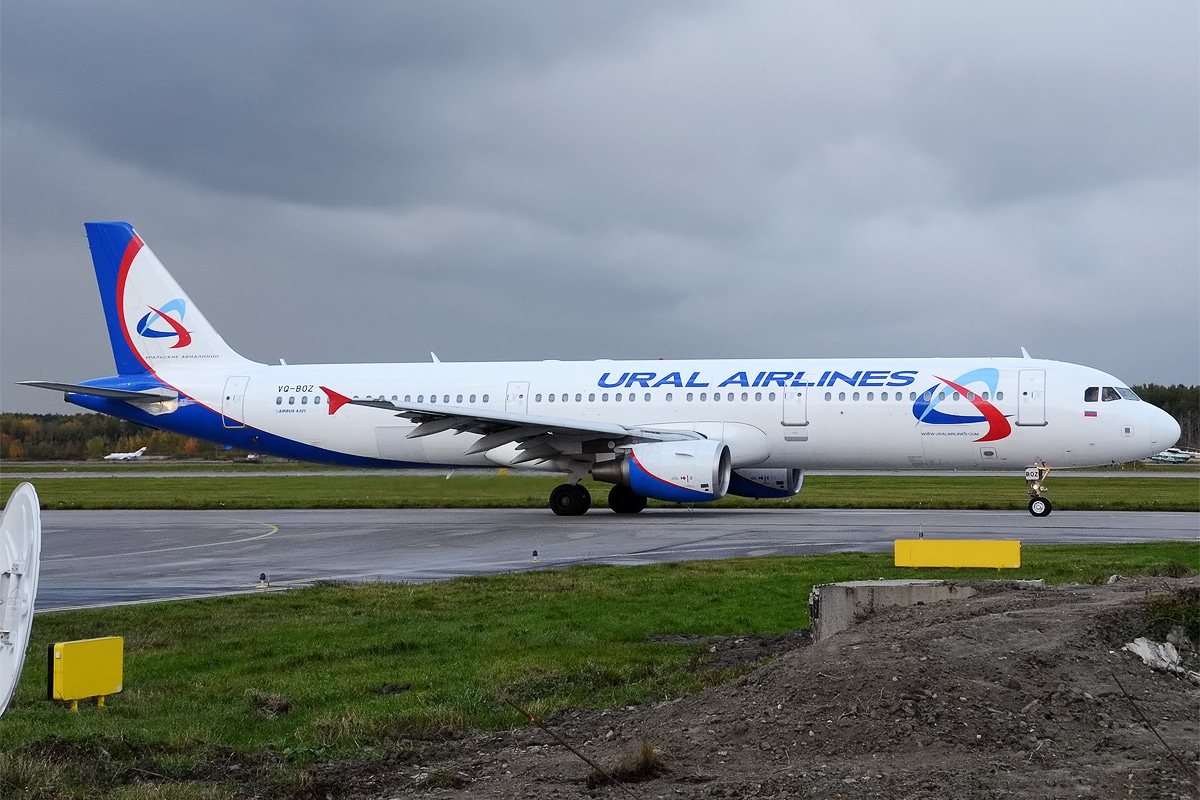Aerospace
U.S. Commerce Issues Order Targeting Russian Carrier Ural Airlines
U.S. Commerce Department announced on Monday that it had issued an order revoking #UralAirlines of #Russia export privileges.

In response to what it claimed were persistent export violations, the U.S. Commerce Department announced on Monday that it had issued an order revoking Ural Airlines of Russia export privileges.
With the order, Ural’s ability to engage in transactions covered by export laws in the US is terminated. Following the invasion of Ukraine, the government of President Joe Biden tightened its sanctions against Russian airlines in an effort to prevent them from obtaining fuel, spare parts, and other services.
Russia prohibits its pilots from working for foreign airlines.(Opens in a new browser tab)
The agency reported that Ural was still promoting domestic flights within Russia as well as international flights out of Moscow to Bishkek, Osh, and Kulyab in Kyrgyzstan. The largest airlines in Belarus and Russia have received 10 orders from Commerce, according to Matthew S. Axelrod, assistant secretary of commerce for export enforcement.
In addition to further harming Russia’s aviation industry, today’s action “highlights the peril and consequences of attempting to circumvent our comprehensive export controls,” said Axelrod. He also noted that “U.S. legal authorities are substantial, far-reaching, and have a meaningful impact on access to global commerce by parties found to be in violation of U.S. law.”
The government last month added three Iranian cargo planes that fly to Russia to a list of aircraft it believes are in violation of U.S. export restrictions. The Commerce Department discovered Boeing 747s being used by Mahan Air, Qeshm Fars Air, and Iran Air to deliver commodities to Russia, apparently in violation of the country’s strict export laws. The Moscow Aviation Institute and many aviation repair facilities were among the 50 Russian firms that the department listed to an economic blacklist.

Aerospace
Boeing Transfers Rocket Stage to NASA, Paving Way for Human Moon Mission

Boeing has achieved a significant milestone by providing NASA with the second core stage of the Space Launch System (SLS) rocket.
This crucial component, crafted at NASA’s Michoud Assembly Facility (MAF), is set to propel the Artemis II crew into lunar orbit, marking humanity’s return to deep space after a 50-year hiatus.
The monumental Boeing-built rocket stage, the largest element of the Artemis II mission, will embark on a journey aboard the Pegasus barge, traveling 900 miles to NASA’s Kennedy Space Center.
Comparison of two legendary aircraft B777x vs B747 aircraft:Click here
Upon arrival, it will be meticulously integrated with other essential Artemis II components, including the upper stage, solid rocket boosters, and NASA’s Orion spacecraft within the iconic Vehicle Assembly Building. This intricate integration process is a vital step toward the eagerly anticipated Artemis II launch, slated for 2025.
“Boeing-built products helped land humankind on the moon in 1969, and we’re proud to continue that legacy through the Artemis generation,” remarked Dave Dutcher, vice president and program manager for Boeing’s SLS program. “Together, with NASA and our industry partners and suppliers, we are building the world’s most capable rocket and paving the way to deep space through America’s rocket factory in New Orleans.”
NASA, Lockheed Martin Reveal X-59 Quiet Supersonic Aircraft:Click here
The delivery of Core Stage 2 marks a significant achievement in the evolution of the SLS rocket. Towering over 200 feet and powered by four RS-25 engines, this core stage, coupled with two solid-fueled booster rockets, will generate a staggering 8.8 million pounds of thrust. This immense power is crucial to launching Artemis II and future missions into the vast expanse of space.
The SLS rocket stands unparalleled in its capability to transport both crew and substantial cargo to the moon and beyond in a single launch. Its extraordinary capacity will facilitate the delivery of human-rated spacecraft, habitats, and scientific missions to destinations including the moon and Mars, ushering in a new era of space exploration.
-

 Travel1 week ago
Travel1 week agoAir India to Expand US Operations with Three New Routes After a Decade
-

 Travel2 weeks ago
Travel2 weeks agoWhy We Should Avoid These Stamps in a Passport
-

 Airlines1 month ago
Airlines1 month agoInvestigations Reveal Fake Chinese Titanium in Boeing and Airbus Jets
-

 Tech4 weeks ago
Tech4 weeks agoChina’s CATL Plans 1,800-Mile Electric Plane Launch by 2027
-

 Airport3 days ago
Airport3 days agoTop 10 Largest Airports in the World by Size
-

 Aerospace4 weeks ago
Aerospace4 weeks agoChina’s Fighter Jets Turn Wings into Autonomous Drones
-

 Airlines4 days ago
Airlines4 days agoAir India Rolls Out A350s for Delhi-New York JFK and Newark Routes
-

 Defence3 weeks ago
Defence3 weeks agoBoeing Enhances Chinook with New Engines and Block II Upgrades at $96 Million







